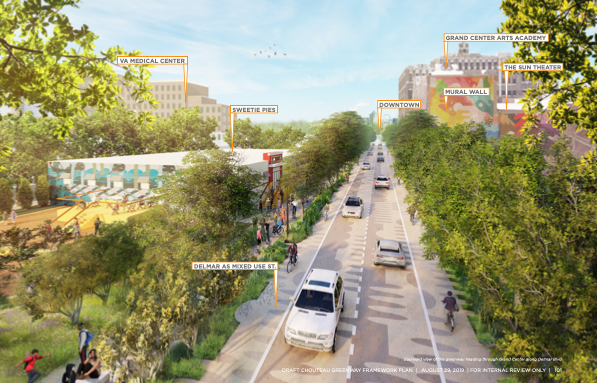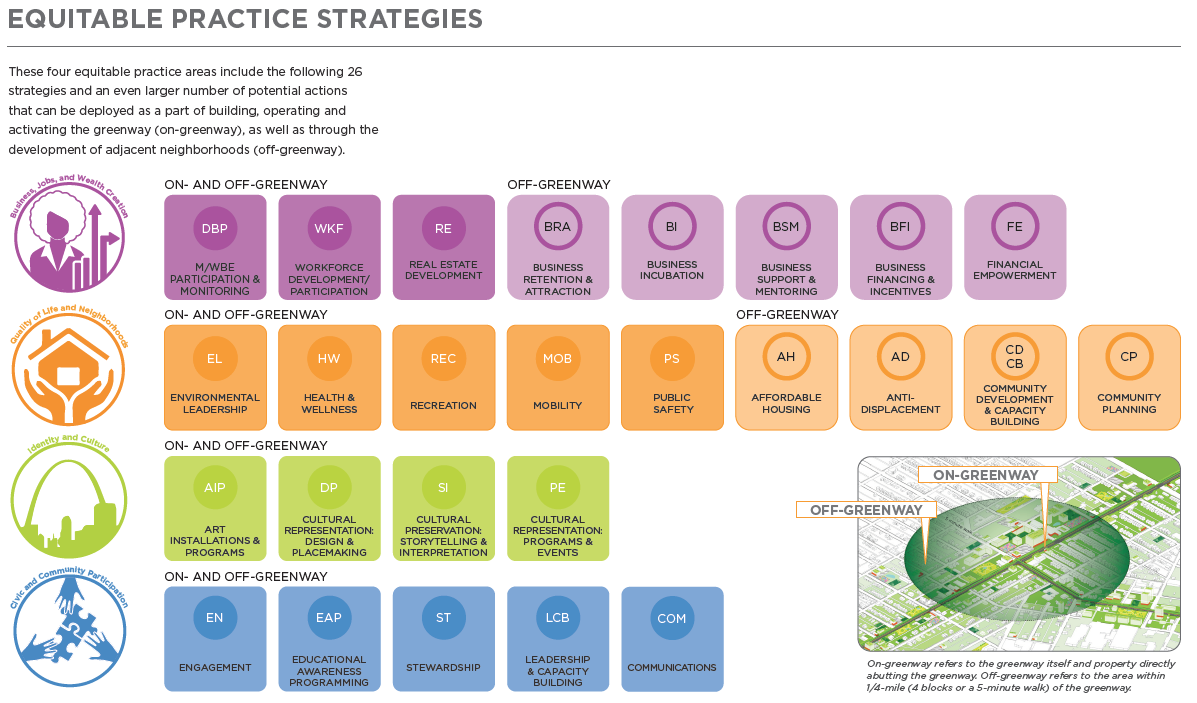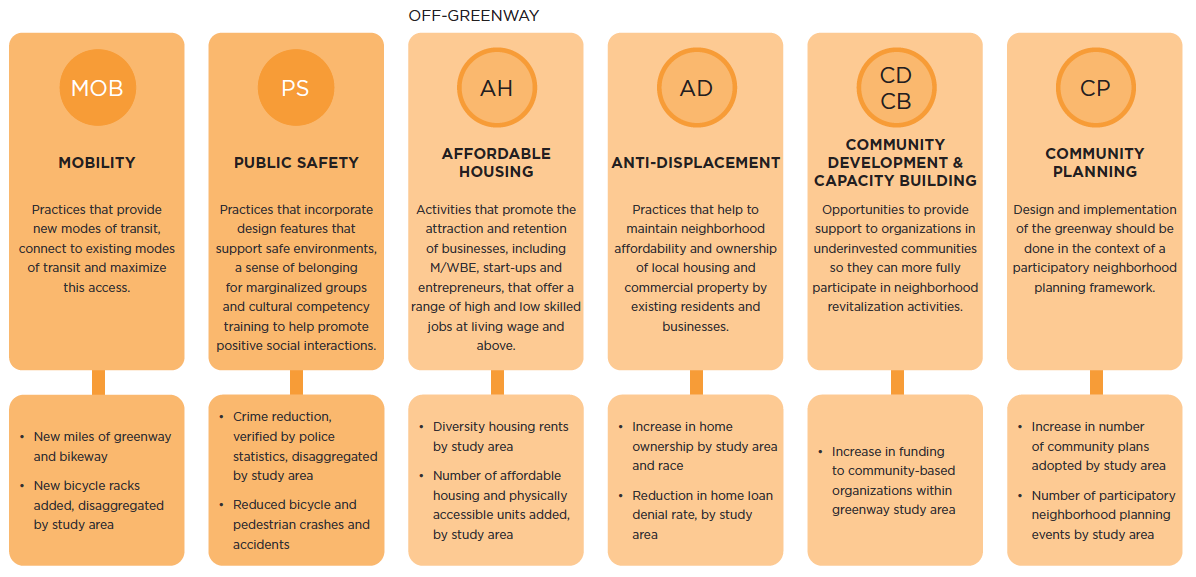Chouteau Greenway Framework Plan
Immensely rich in culture and history, St. Louis struggles to become a connected city, along with facing significant equity, economic and urban renewal challenges. These complex issues are the focus of an ambitious framework plan for the Chouteau Greenway created by a diverse team of designers, architects, artists, economists, activists and engineers. Funded in part by the Great Rivers Greenway (GRG), the framework plan is the culmination of an international competition launched in 2017 by GRG and a subsequent year-long planning and design effort.
urbanAC served as the lead urban planning and equitable development consultant for the team led by Stoss Landscape Urbanism of Boston, MA. The interdisciplinary team of 13 firms embarked on a deliberate exploration of how to incorporate connection, prosperity, inclusion, reconciliation, and joy along each mile of the Greenway. While the initial impetus for the competition was to connect St. Louis’ Forest Park with the famous Gateway Arch, this team proposed the ‘The Loop + The Stitch’, which linked these iconic open spaces with north/south spurs that added connections to Fairground and Tower Grove Park—making investments in African-American neighborhoods that have suffered from decades of disinvestment. The end result is a plan that connects 17 city neighborhoods linking parks, business and arts districts, transit corridors, and cultural/educational institutions in a rich and inclusive celebration of art, commerce, culture and history.
Our guiding inspirations for the project were to unearth, connect, heal, provoke, cultivate and envision—with the explicit mission to intentionally highlight a network of embedded histories, discovered and undiscovered, bringing them to the forefront of the greenway. While the project activates key existing amenities within St. Louis, it purposefully focuses attention on forgotten civic spaces like the Griot Museum of Black History at St. Louis Place, and the historic Mill Creek Valley, a vibrant African American community erased in the creation of a freeway overpass.
The framework plan consists of a series of geographic, equity, economic, architectural, programming, art and design guidelines that will serve as the master plan for projects. The team was sub-divided into 5 topical focus areas. urbanAC led the Equity component, developing a unique set of 26 equitable practices to be deployed throughout the five-mile greenway, and identified potential partners on and adjacent to the greenway corridor. The equitable practices address the issues of Business, Jobs and Wealth Creation; Quality of Life and Neighborhoods; Culture and Identity; and Civic Participation and Capacity.
Other components of the framework plan included Identity and Components which were tasked with developing the overall character of the greenway and included a strategy for design components, materials, ecology, and art; Alignment which focused on the feasibility of the Greenway route, assessing the condition of various road and rail rights-of-way; Economic Development and Governance outlined strategies and metrics to inform the project process, planning, and eventual implementation of the greenway. The making of a greenway at the city-scale is by nature a community process, involving individual citizens, public, private and non-profit institutions, and government to name a few. Given an explicit goal of connecting people, the planning process was highly collaborative involving executive committee oversight, working groups, civic engagement and a robust, interdisciplinary design process—all carefully representative of the city's demographics, from race and age to professional background and community role, including a specific Artist of Color Council.




